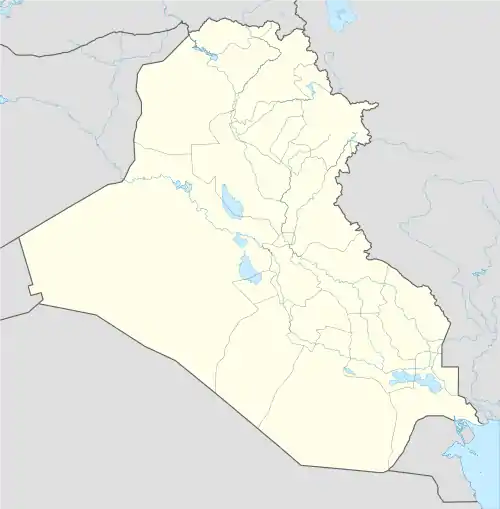بادتیبیرا
بادتیبیرا ( به معنی «دیوار مسگران»[1] یا «دژ آهنگران»[2]) که امروزه با نام تل المدینه شناخته میشود و بین شطره و تل السنکره (لارسای باستان) در جنوب عراق قرار دارد[3]، شهری باستانی است که نامش در میان شهرهای پیش از طوفان در فهرست پادشاهی سومر آمده است. نام اکدی آن دورگورگوری بود.[4] مورخانی چون ابیدینوس، آپولودور آتنی و بروسوس در یونانی از آن با عنوان Παντιβίβλος (پانتیبیبلوس) نام بردهاند. این نام یادآور نام دیگر این شهر یعنی پاتیبیرا (آبراه آهنگران) است.[2]
بادتیبیرا | |
|---|---|
 بادتیبیرا محلی در عراق | |
| مختصات: ۳۱°۴۶′۰۰″ شمالی ۴۶°۰۰′۰۰″ شرقی |
منابع
- W.F. Albright and T.O. Lambdin, "The Evidence of Language", in The Cambridge Ancient History I, part 1 (Cambridge University Press), 1971, ISBN 0-521-07051-1: 150.
- Hallo, William W. and William Kelly Simpson, The Ancient Near East: A History, Harcourt Brace Jovanovich, Inc., New York, 1971, p. 32
- Vaughn E. Crawford, "The Location of Bad-Tibira", Iraq 22 "Ur in Retrospect. In Memory of Sir C. Leonard Woolley" (Spring - Autumn 1960:197-199); the secure identification is based on the recovery at the pillaged site of fragments of a known inscription of Entemena that had surfaced in the black market without provenance. Earlier excavations at a mound called Medain near the site of Lagash, following a report of a vendor of one of the inscriptions, had proved fruitless: see H. de Genouillac, Fouilles de Telloh, ii:139 (noted by Crawford 1960:197 note 7).
- Collection of taxes from Dûr-gurgurri features in correspondence of Hammurabi (first half of the 18th century BCE) noted in L. W. King and H. R. Hall, Egypt and Western Asia in the Light of Recent Discoveries (New York, 2005) p. 306f; it remained a city of metal-workers and the principal settlement of the guild of gugurrē, "metalworkers" (L. W. King, The Letters And Inscriptions Of Hammurabi, King Of Babylon About B.C. 2200 vol. III, p. 21, note 2.).
This article is issued from Wikipedia. The text is licensed under Creative Commons - Attribution - Sharealike. Additional terms may apply for the media files.
.svg.png.webp)
